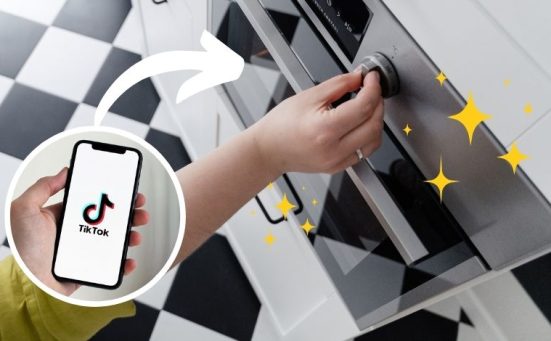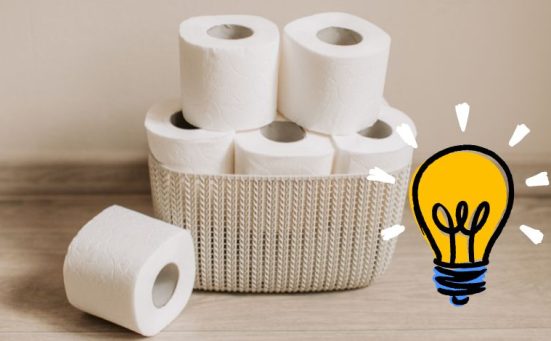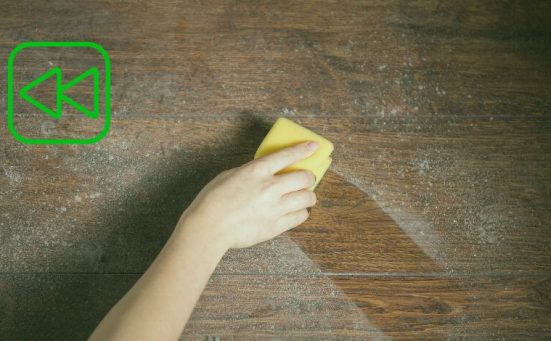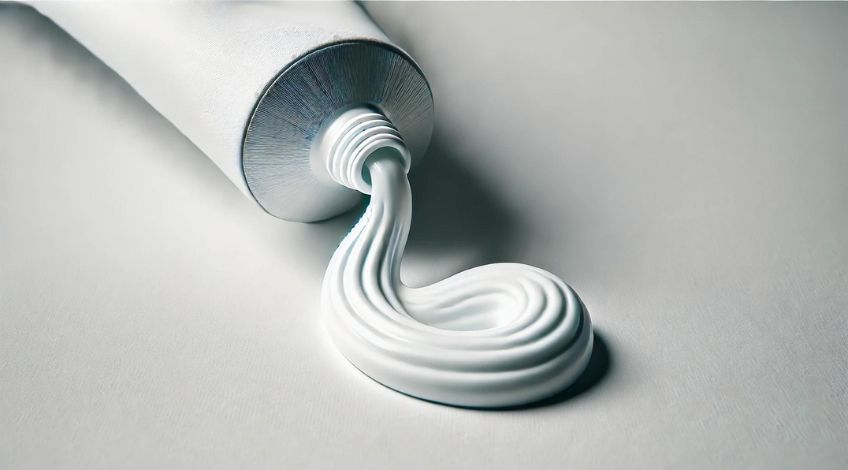
15 Cleaning Hacks Using Toothpaste
Believe it or not, toothpaste isn’t just for keeping your teeth clean and bright. In fact, this everyday bathroom staple has a surprising list of uses around the house!
Let’s have a closer look into the clever ways to put toothpaste to work, besides your smile!
Why Toothpaste Works For Cleaning Stuff
You might be wondering, “Why on earth would I use toothpaste for cleaning?”
Well, let me tell you, this bathroom staple is a secret weapon for tackling all sorts of household messes. How? The magic lies in its unique composition!
Most toothpastes contain mild abrasives like calcium carbonate or silica, which act like tiny scrubbing agents. These work wonders on various surfaces without causing scratches.
But that’s not all! Toothpaste often includes detergents and mild bleaching agents too. These ingredients team up to lift stains and brighten surfaces. Plus, it is pH balanced, and its mild properties allow it to be used for a variety of cleaning tasks.
It’s like having a mini cleaning crew in a tube!
Awesome Ways You Can Use Toothpaste In Your Home
Get ready to see toothpaste in a whole new light. These 15 cleaning hacks will have you reaching for the tube for more than just your teeth:
Removing Stains From Clothing
We’ve all been there – you’re out for dinner, enjoying your meal, when suddenly a blob of sauce lands on your favourite white shirt. Don’t panic! Toothpaste can come to your rescue.
Simply dab a bit of non-gel white toothpaste onto the stain, gently rub it in, and let it sit for about 10 minutes before washing as usual. This trick isn’t just for tomato sauce – it works brilliantly on a whole range of stains, including:
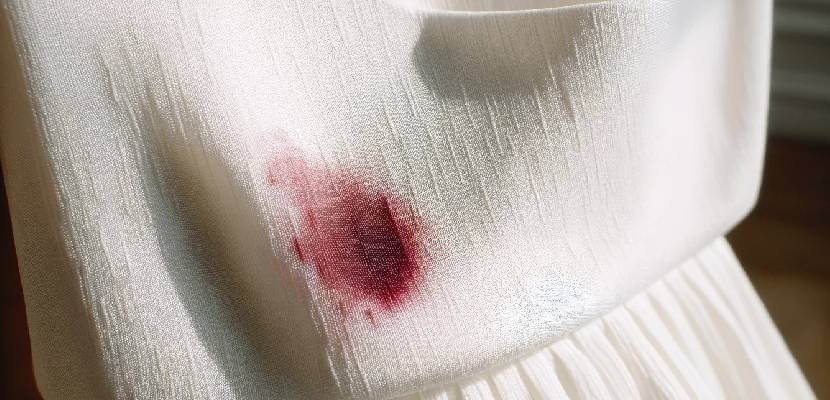
- Ink marks from that pen that leaked in your pocket
- Lipstick smudges
- Grass stains
- And even those stubborn yellow underarm stains on white t-shirts
Shining Jewellery
Is your silver jewellery looking a bit dull and tarnished? Before you rush off to the jeweller’s, try this simple trick.
Gently rub your silver pieces with a soft cloth and a small amount of toothpaste. Then, rinse thoroughly with warm water and dry with a clean cloth. You’ll be amazed at how your jewellery sparkles like new!
This method works particularly well for silver chains, pendants, and even some types of earrings.
WARNING: Be cautious when it comes to gemstone jewellery, as some stones can be sensitive to the abrasives in toothpaste.
Cleaning White Trainers
There’s nothing quite like a fresh pair of white trainers, is there? But keeping them pristine can be a challenge. Here’s where toothpaste steps in as your shoe-cleaning partner.
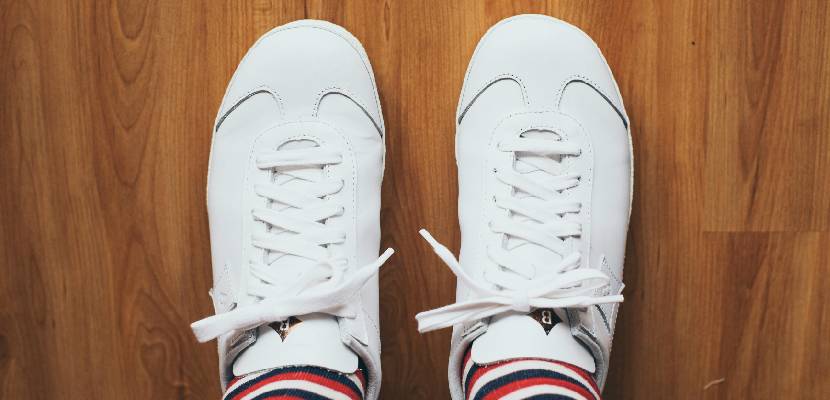
Focus on the white rubber parts of your trainers – the soles and any rubber toe caps. Grab an old toothbrush (not the one you use for your teeth, obviously!), squeeze on some toothpaste, and start scrubbing. Pay extra attention to scuff marks and stubborn dirt.
Once you’ve given them a good scrub, wipe off the toothpaste with a damp cloth.
For extra stubborn marks, you can let the toothpaste sit on the shoe for about 10 minutes before scrubbing.
Polishing Silverware
Got a special dinner coming up and want your silverware to shine? Toothpaste comes to the rescue again! This trick works wonders on tarnished forks, spoons, and knives.
Apply a small amount of toothpaste to each piece, rub gently with a soft cloth, then rinse and dry. Your cutlery will be gleaming in no time.
It’s a great way to impress your guests without spending hours polishing or resorting to harsh chemical cleaners!
Removing Crayon Marks From Walls
If you have little ones at home, you’ve probably experienced the joy of finding impromptu crayon masterpieces on your walls. Don’t worry, you won’t need to repaint the whole room.
Gently rub some toothpaste over the crayon marks with a damp cloth. The mild abrasives in the toothpaste will lift the waxy crayon residue without damaging most paint finishes. Once you’ve worked on the marks, wipe clean with a fresh, damp cloth.
This method can also work on other surfaces like doors or even some types of wallpaper – but always test a small area first!
Defogging Mirrors
Tired of wiping down your bathroom mirror after every shower? Here’s a neat trick to keep it clear.
Rub a small amount of toothpaste over the surface of the mirror, then buff it off with a clean, dry cloth. This creates a thin, invisible film that resists condensation.
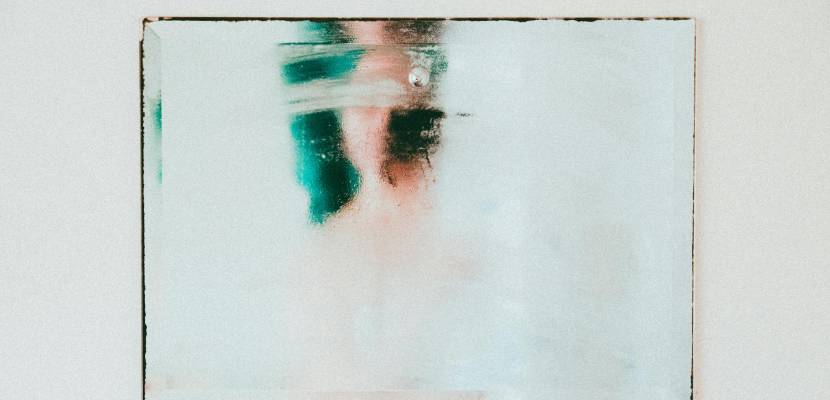
It’s like giving your mirror a superpower against steam! The effect can last for several weeks before you need to reapply. Just imagine – no more trying to style your hair or taking selfies in a foggy mirror!
Cleaning Headlights
Foggy headlights aren’t just unsightly – they can be downright dangerous, as they reduce visibility when driving at night. Before you spend a fortune replacing them, try this toothpaste trick.
Squeeze some toothpaste onto a soft cloth and rub it onto your headlights in a circular motion. You might need to put a bit of elbow grease into it, especially if they’re very foggy.
Rinse thoroughly with water and repeat if necessary.
This method can significantly improve the clarity of your headlights, enhancing both the appearance of your car and your safety on the road.
It’s particularly useful for older cars or those that have spent a lot of time parked outside.
Freshening Up Smelly Shoes
We’ve all got that one pair of shoes that could clear a room, right? Whether it’s your gym trainers or your favourite comfy loafers, toothpaste can help combat those funky odours.
Apply a thin layer of toothpaste inside your shoes and let it sit overnight. In the morning, wipe out the toothpaste with a damp cloth. The antibacterial properties in toothpaste help eliminate odour-causing bacteria, leaving your shoes smelling much fresher!
This trick works especially well for canvas shoes, trainers, and other casual footwear.
Cleaning Foggy Glasses
If your specs are looking a bit grimy, toothpaste can help restore their clarity. Just be very gentle with this method to avoid scratching your lenses!
Apply a tiny amount of non-gel toothpaste to your lenses and gently rub with your fingers. Rinse thoroughly with lukewarm water and dry with a soft, lint-free cloth. This method can remove built-up grime and oil that regular cleaning might miss.
Remember, this trick is for glass lenses only. Don’t try it on plastic lenses or those with special coatings, as it could damage them.
Removing Water Rings From Furniture
Have you ever forgotten to use a coaster and ended up with an unsightly water ring on your wooden coffee table? Before you resign yourself to always using a tablecloth, try this toothpaste solution.
Gently rub a small amount of non-gel toothpaste over the water ring, working in the direction of the wood grain. Use a soft cloth and don’t apply too much pressure. After a minute or two of rubbing, wipe the area clean with a damp cloth.
This method can work wonders on water rings, especially if they’re relatively fresh. For older or more stubborn marks, you might need to repeat the process a few times.
Cleaning Iron Plates
Is your iron leaving marks on your clothes instead of smoothing them out? It might be time to give the plate a good clean.
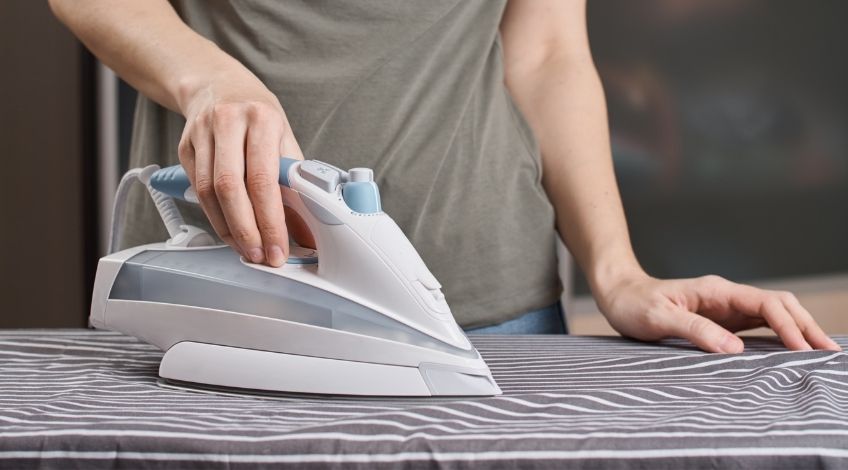
Wait until your iron is completely cool, then gently rub some toothpaste over the plate. Pay extra attention to any built-up residue or scorch marks. Wipe clean with a damp cloth, making sure to remove all the toothpaste.
This trick can remove mineral deposits from steam vents and general grime from the plate, helping your iron glide smoothly once again.
Just be sure to wipe it thoroughly – you don’t want toothpaste-scented shirts!
Polishing Chrome Fixtures
Want to bring the shine back to your bathroom and kitchen fixtures? Toothpaste can help here too. It’s particularly effective on chrome taps, shower heads, and cabinet handles.
Apply a small amount of toothpaste to the fixture and rub gently with a soft cloth. For intricate designs or hard-to-reach spots, an old toothbrush can be handy. Rinse thoroughly and dry for a sparkling finish.
This method not only shines your fixtures but can also help remove light limescale build-up.
It’s a great way to freshen up your bathroom or kitchen without resorting to harsh chemical cleaners.
Cleaning Computer Screens And Phone Displays
Our screens collect all sorts of smudges and fingerprints throughout the day. For those really stubborn marks that just won’t budge with regular cleaning, toothpaste might be the answer.
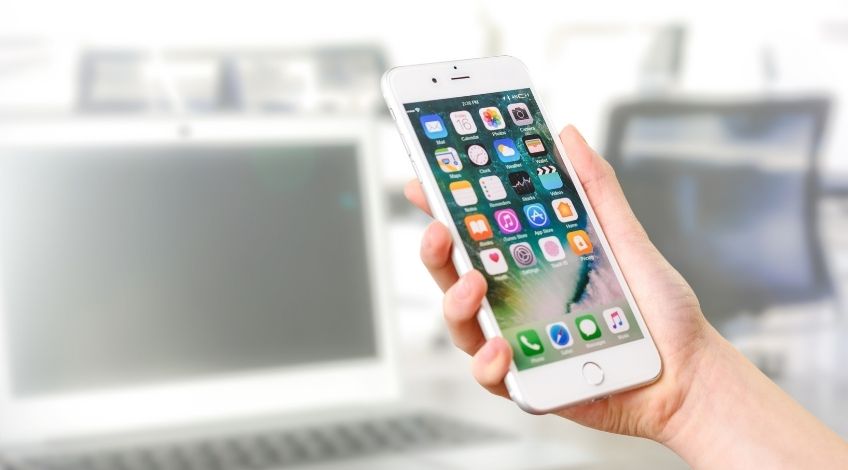
Use a tiny amount of toothpaste on a soft, lint-free cloth. Gently rub in a circular motion, focusing on the areas with stubborn marks. Then, wipe clean with a slightly damp cloth and dry thoroughly.
Be very gentle with this method and use it sparingly. While it can be effective, too much pressure or frequent use could potentially damage your screen. Always check your device’s cleaning recommendations first!
Refreshing The Car Interior
Does your car have lingering odours from that takeaway you had last week? Or maybe it’s just developed that “old car smell”? Toothpaste can help freshen things up.
Rub a small amount of toothpaste onto the upholstery or carpet, focusing on areas that seem particularly smelly. Let it sit for a few minutes, then wipe away with a damp cloth. The toothpaste will absorb odours, leaving your car smelling much fresher.
This method works particularly well for fabric seats and carpets. For leather interiors, it’s best to stick to cleaners specifically designed for leather to avoid any damage.
Deodorising Hands
Have you just finished chopping onions or garlic for dinner? Those smells can linger on your hands for hours. Here’s where toothpaste comes in handy once again.
Rub a small amount of toothpaste on your hands as you would with soap. Pay particular attention to your fingertips where the smell tends to linger. Then wash with soap and water as normal.
The toothpaste helps neutralise strong odours, leaving your hands smelling fresh and clean.
This trick is particularly useful for cooks and gardeners who often deal with strong-smelling ingredients or materials!
Bonus Tips And Things To Consider When Using Toothpaste
While toothpaste is a versatile cleaner, it’s still important to use it correctly. Here are some tips to keep in mind:
Use Non-Gel Toothpaste
When it comes to cleaning with toothpaste, not all types are created equal. Stick to traditional white, non-gel toothpastes for best results. These usually contain more of those handy abrasive particles that do the heavy lifting in cleaning.
Gel toothpastes, while great for your teeth, often lack the abrasive qualities needed for effective cleaning around the house. They’re also more likely to leave a sticky residue, which is the last thing you want when you’re trying to clean something!
- STRONGER 24HOUR BACTERIAL DEFENCE: Enjoy stronger 24hour bacterial defence for your whole mouth* with our dual zinc and arginine formula, keeping your smile protected
- COMPLETE PROTECTION: Experience 8 benefits for complete protection in one Colgate Total toothpaste, giving you the confidence of a cleaner mouth every time you brush
Test On A Small Area First
Before you go to town with toothpaste on your favourite shirt or antique silver, it’s always wise to do a patch test. Find a small, inconspicuous area and apply a tiny amount of toothpaste. This will help you ensure it won’t cause any damage or discolouration.
This step is particularly important for delicate fabrics, painted surfaces, or anything of significant value. Better safe than sorry, as they say!
Avoid Using On Delicate Surfaces
While toothpaste is a versatile cleaner, it’s not suitable for everything. Some materials are too delicate to withstand even the mild abrasiveness of toothpaste.
As a general rule, avoid using toothpaste on:
- Pearls or soft stones like opals
- Gold-plated jewellery
- Marble or other soft stone surfaces
- Speciality coatings on glasses or sunglasses
- Fine or antique wood finishes
When in doubt, it’s best to stick to cleaning methods specifically recommended for these more delicate items.
Rinse Away Thoroughly
After you’ve finished cleaning with toothpaste, it’s crucial to rinse the area thoroughly. Any leftover toothpaste residue can attract dirt and dust, defeating the purpose of your cleaning efforts!
For items like jewellery or silverware, you might want to rinse them under running water. For larger surfaces, use a clean, damp cloth to wipe away all traces of toothpaste.
Make sure to dry the item or surface afterwards to prevent water spots.
Who knew that little tube in your bathroom cabinet could be so useful around the house?
With these clever hacks, you can tackle a variety of cleaning tasks using something you already have on hand. From brightening up your trainers to banishing bad smells from your car, toothpaste proves itself as a true cleaning multi-tasker.
So next time you’re faced with a tough cleaning job, why not give toothpaste a try? You might be surprised at just how effective this everyday item can be.
What are the unusual ways you use toothpaste in your home? Tell us about your experience below!
SEE ALSO: Will Vinegar Help When Doing Laundry In Hard Water?
Frequently Asked Questions
To clean your iron plate with toothpaste, make sure the iron is completely cool. Apply a small amount of non-gel toothpaste to the plate and gently rub it in, focusing on any built-up residue or scorch marks. Wipe clean with a damp cloth to remove all traces of toothpaste.
Yes, you can use toothpaste to remove stains. Dab a bit of non-gel white toothpaste onto the stain, gently rub it in, and let it sit for about 10 minutes before washing as usual. This works well on a variety of stains, including ink, lipstick, grass, and even yellow underarm stains.
Yes, you can use toothpaste to clean shower glass. Apply a small amount of non-gel toothpaste to a soft cloth and gently rub the glass in circular motions. Rinse thoroughly with water and dry with a clean cloth to avoid streaks.
Toothpaste can indeed remove hard water stains. Apply a small amount of non-gel toothpaste to a soft cloth or sponge and rub the stained area. Rinse well with water and wipe dry to see the results.
When it comes to cleaning, the best toothpaste to use is non-gel white toothpaste. These usually contain the mild abrasives needed for effective cleaning without leaving a sticky residue. Avoid gel toothpastes as they lack the necessary abrasive qualities.
Also, follow us on Pinterest ...


